Regional Capacity Building- Setting Expectations for COP29 and Influence NDC 3.0

10-11 September 2024, Colombo, Sri Lanka
The regional meeting in Colombo (10-11 September 2024) focused on strengthening youth engagement in climate change, preparing for COP29, and reviewing CANSA’s 2023-2030 strategy. Key discussions centered on climate finance, loss and damage, regional cooperation, and empowering youth in shaping national policies, particularly Nationally Determined Contributions (NDCs). Sessions on urban resilience, highlighted South Asia’s vulnerability to climate impacts, stressing the need for adaptation-focused actions in cities like Delhi and Karachi. Case studies from Nepal and Kolkata showcased local climate challenges and solutions, with discussions on sustainable consumption underscoring the need for a circular economy.
A session on water security in the Himalayan Basin emphasized the need for regional cooperation, while the Fossil Fuel Non-Proliferation Treaty highlighted the urgency of transitioning away from fossil fuels. Discussions on climate finance exposed the vast gap between the $100 billion goal and actual needs, with calls for more equitable funding mechanisms. The event emphasized inclusivity, gender balance, and practical climate actions, focusing on empowering civil society and youth while promoting collaboration across South Asia to address pressing climate issues.


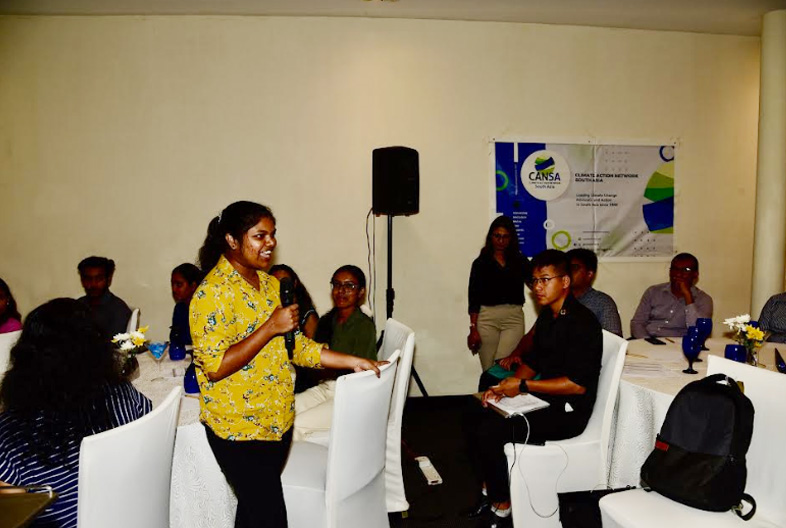
The session on urban resilience led by Nakul Sharma emphasized South Asia’s vulnerability to climate impacts, particularly in urban areas like Delhi and Karachi. Key issues include extreme heat, air pollution, and inadequate infrastructure. The session stressed the need for a shift from mitigation to adaptation-focused urban climate action. It called for integrating urban resilience into national policies and aligning NDCs with city-level plans. Participants discussed heat stress, food security, and water shortages, highlighting the urgency of participatory approaches, local governance capacity building, and learning from shared experiences to tackle urban climate hazards effectively.
The case study highlighted urbanization challenges in Nepal, with a focus on Dhulikhel’s rapid urban growth and water scarcity issues due to declining precipitation. Recommendations included sustainable urban planning, disaster response, waste management, and renewable energy initiatives. Local community involvement and integrating climate resilience into municipal strategies were emphasized. Participants stressed the importance of CSR support, youth involvement, and stakeholder collaboration in driving change. Examples from Kerala’s successful Carbon Neutral Meenangadi project were discussed. Key takeaways included the need for stronger political will, capacity building, climate finance, and formal youth representation in climate action planning.
Kolkata’s Climate Action Plan (CAP), led by the Kolkata Municipal Corporation (KMC), was introduced by Jayanta Basu, who said it focuses on reducing fossil fuel use in transport by 2030 and is driven by data-driven decisions and sector-specific targets. It emphasizes local ownership and stakeholder involvement, with ongoing efforts to secure financing. The CAP aims to serve as a model for practical city-level climate action. In parallel, CANSA’s Climate-Induced Migration Program, introduced by Rushati Das, active since 2015, addresses migration due to climate impacts across South Asia. Discussions highlighted the need for coherent policies, financial resources, and regional cooperation to support displaced populations, particularly vulnerable groups like women and children.
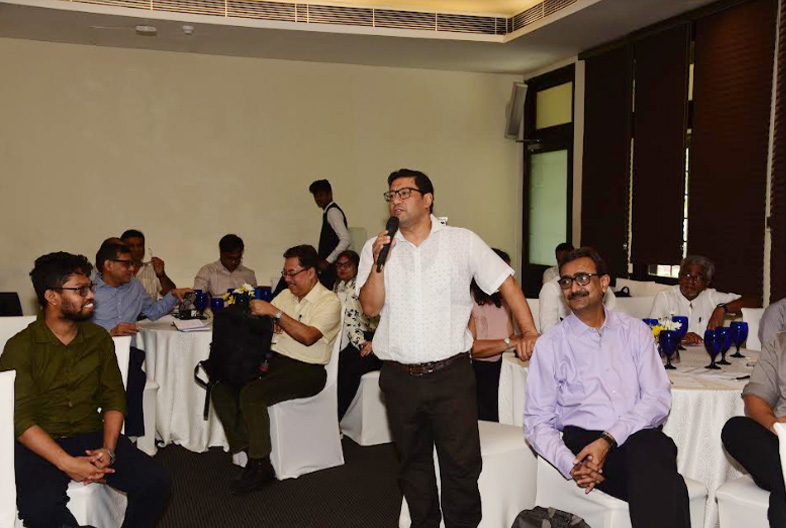


The Melamchi Project case study in Nepal highlights the distinction between economic and non-economic loss and damage from climate-induced disasters. While economic losses, like infrastructure damage, were severe, non-economic impacts—such as mental health issues, loss of cultural heritage, and reduced social interactions—were equally significant. With 85% of respondents reporting mental health problems, and traditional festival spaces destroyed, the floods disrupted both physical and cultural life. Government support fell far short of actual losses, highlighting the need for better policies and data collection to address both tangible and intangible impacts of climate disasters, particularly in vulnerable communities.
The session on Communications and Youth Engagement highlighted strategies for improving climate communication and enhancing youth participation in climate action. Divyanshi Yadav emphasized the need for effective communication among CANSA network members and improving digital platforms, including social media, blogs, and films. Youth panelists, like Prakash Lama and Sohanur Rehman, shared their experiences in pushing for youth representation in climate policy and negotiations, emphasizing the importance of direct youth involvement. Recommendations included better collaboration across South Asia, increased resources for youth, integrating climate education into curricula, and sustainable capacity building for long-term youth engagement in climate action.
The session on Urban Resilience and Livelihood Framework, led by Palash Kanti Das, emphasized the importance of using a comprehensive livelihood framework that incorporates human, financial, social, natural, and physical capital. Key strategies discussed include the Graduation Approach, developed by Abhijit Banerjee and Esther Duflo, which lifts people out of poverty through multi-dimensional interventions, ensuring long-term sustainability. Challenges such as aligning high-level policies with ground-level implementation, avoiding greenwashing, and addressing systemic governance issues were highlighted. Participants stressed the need for rigorous monitoring, community involvement, and sustainable, climate-resilient livelihood options that effectively mitigate climate risks and support vulnerable communities.
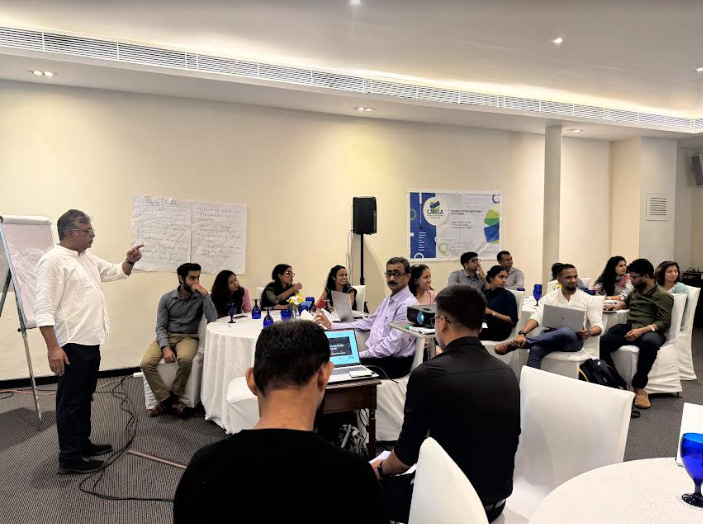

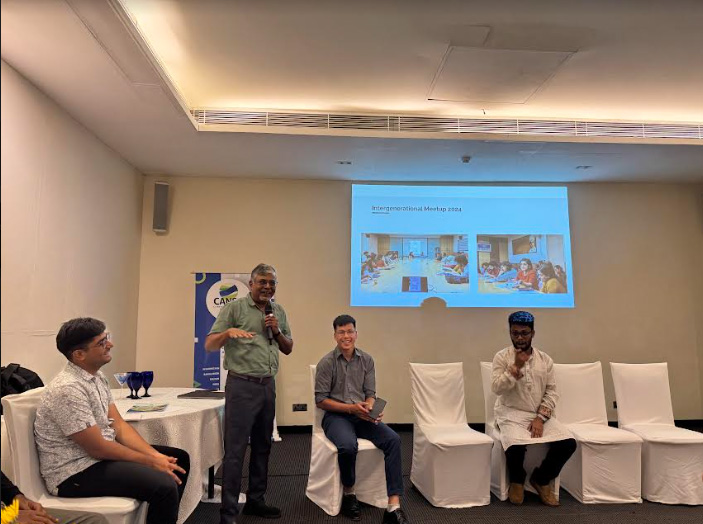
The session on Sustainable Consumption and Production, led by Sanjay Vashist, highlighted the urgent need for substantial action to limit global warming to 1.5°C, noting that current global commitments project a rise of around 2.4°C. Central to this effort is the transition to a circular economy focused on resource efficiency through reuse, recovery, and recycling. The practical application of this model, while long-discussed, is crucial to reducing emissions and minimizing waste.
Key takeaways included the differentiation between luxury and survival emissions, with countries like India emphasizing their lower per capita emissions and the need for a balanced approach to climate responsibilities. Policies such as the European Union’s Carbon Border Adjustment Mechanism (CBAM) will have global implications, affecting high-carbon sectors like textiles.
Sustainable consumption and production (SCP) are integral to achieving the 2030 Sustainable Development Goals (SDGs), addressing three primary crises—biodiversity loss, air pollution, and climate change. Achieving SCP requires transforming material use, reducing reliance on raw materials, increasing recycling, and adopting innovative waste management practices. The private sector’s role in reducing raw material use and enhancing production efficiency was also emphasized.
Effective policy incentives and penalties are still under development, and a clear framework for both domestic and foreign investments in SCP is needed. Moving forward, systemic change, multi-stakeholder engagement, and quantifiable progress in emissions reduction are essential for global climate goals.
Shailendra Yashwant emphasized the broader water crisis in the Himalayan region beyond glaciers, affecting springs, streams, and river flows. South Asian countries must collaborate to address climate change impacts through platforms like SAARC. Despite skepticism about SAARC’s effectiveness, it has existing environmental agreements. The campaign plans to engage civil society, officials, and the media, aiming for a 10-point agenda and a dedicated SAARC water committee. Participants stressed the importance of evidence-based approaches, regional cooperation, and political buy-in to tackle water security amidst geopolitical tensions.

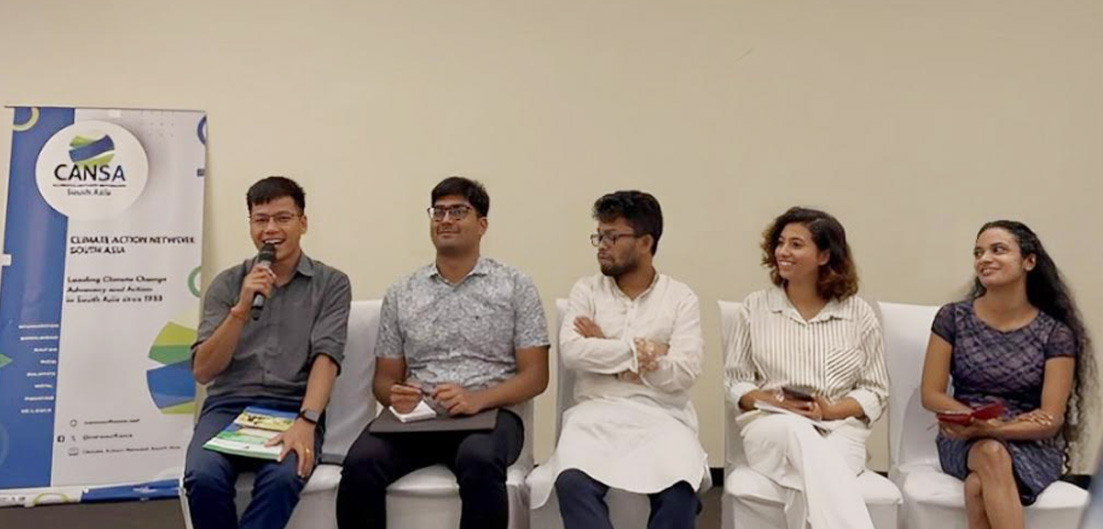
Shailendra Yashwant discussed the limitations of the Paris Agreement in addressing fossil fuel production, emphasizing the need for a global treaty like the Fossil Fuel Non-Proliferation Treaty. The proposed treaty, endorsed by cities, organizations, and individuals, focuses on a Just Transition, Non-Proliferation, and Fair Phase-Out of fossil fuels. The campaign seeks endorsements from South Asia, urging international cooperation to bridge the gap between current fossil fuel production and climate goals. Renewable energy’s potential and strategic endorsements are central to building momentum toward the treaty’s adoption, particularly in fossil fuel-dependent regions.
Nakul Sharma highlighted the vast disparity between the $100 billion climate finance goal and the actual needs, with developing countries requiring over $1 trillion for adaptation by 2050. The current climate finance system, dominated by loans and high-interest rates, exacerbates debt burdens for vulnerable nations. There’s a pressing need for more grants, private sector involvement, and equitable access to finance. The Global Stocktake (GST) and NCQG frameworks emphasize transparency, accountability, and a just transition. Climate justice movements demand trillions in “climate debt” owed by developed nations to address these disparities.
The event successfully aligned participants on key issues and emphasized the need for more brainstorming and breakout sessions. There was appreciation for diversity, gender balance, and a paperless approach. Calls were made for better Secretariat inclusion, increased national-level interaction, youth leadership, and a detailed focus on climate finance and gender issues.





